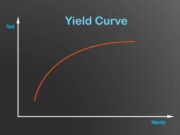Return on Assets – ROA
Return on Assets (ROA) is a ratio designed to measure the efficiency of a company’s management. It indicates the company’s profitability as compared to...
Real Estate Investnment Trust
A REIT offers you investment options in real estate through property or mortgages. It often trades on major stock exchange platforms. REITs provide investors...
Reverse Mortgage
DefinitionA reverse mortgage is a type of home loan for older homeowners that requires no monthly mortgage payments. Borrowers are still responsible for property...
Real-Time Trade Reporting
What is 'Real-Time Trade Reporting' A requirement imposed on market makers (and in some instances, non market makers) to report each trade...
Rate Anticipation Swap
What is 'Rate Anticipation Swap' A type of swap in which bonds are exchanged according to their current duration and predicted interest...
Real Estate Limited Partnership (RELP)
What is 'Real Estate Limited Partnership - RELP' A limited partnership entity organized to invest in real estate. A Real Estate Limited...
Rational Choice Theory
DefinitionRational choice theory, also known as choice theory or rational action theory, is a framework for understanding and often formally modeling social and economic...
Realization Multiple
What is a 'Realization Multiple' A realization multiple is a private equity measurement that values the return paid to an investor. The...































